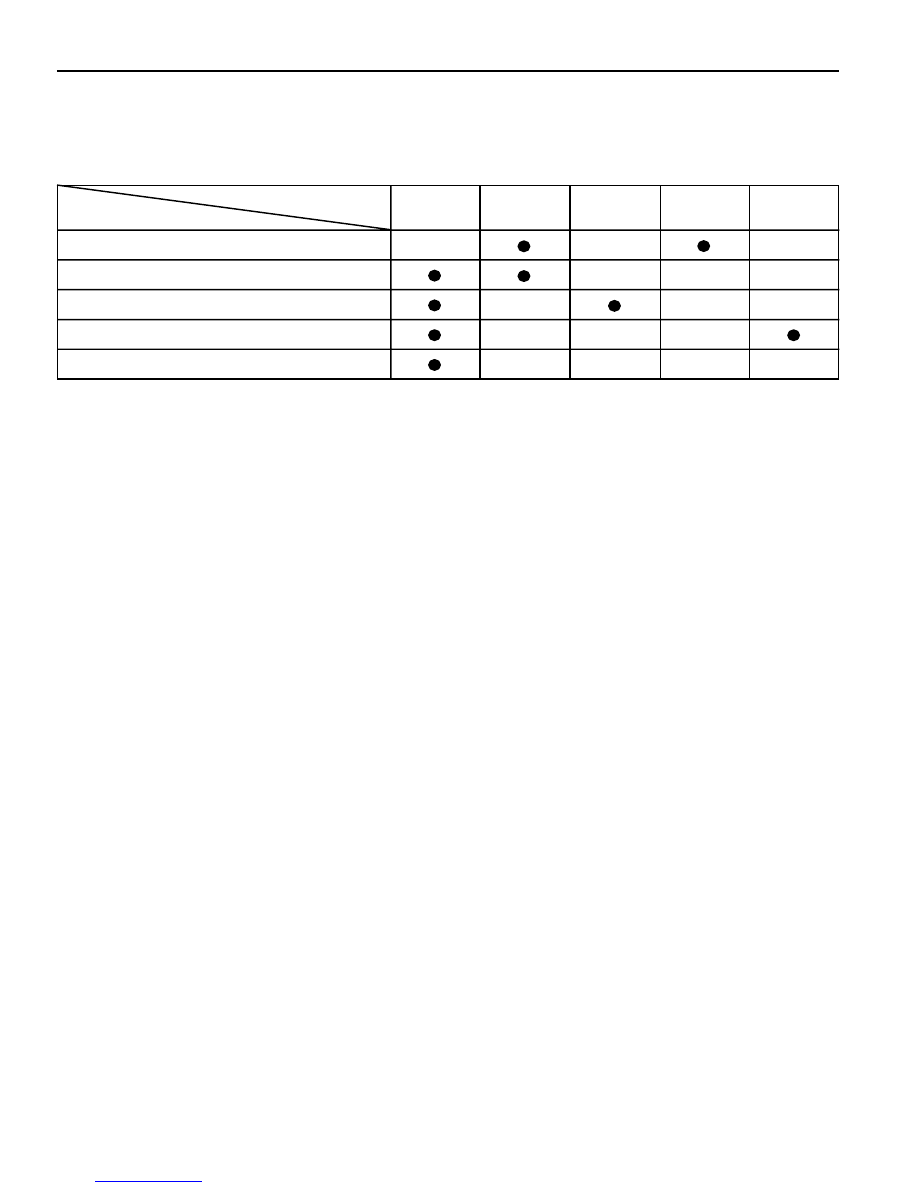Daewoo Musso. Manual - part 203

2A-6 SUSPENSION DIAGNOSIS
DAMPING FORCE CONTROL LOGIC
Control Logic that applies on damping force variable suspension is comprised of road sensing driving comfort control
logic to increase driving comfort and vehicle speed sensing control logic, anti-roll control logic and anti-dive control
logic to secure control safety.
Logic
Sensor
Road Sensing Driving Comfort Control Logic
Speed
Vertical
Sensor (2.5g)
Lateral
Sensor (1g)
Axle
Acceleration
Sensor (10g)
Brake
Anti-bounce Control Logic
Anti-roll Control Logic
Anti-dive Control Logic
Vehicle Speed Sensing Control Logic
NORMAL CONTROL
Initial Stage
When ignition switch is "ON", system initialization will be performed for approx. 3 seconds. During this time, warning
lamp will stay ON and damping force will be switched to Hard status. After 3 seconds, warning lamp will turn off and
normal control status will be restored.
Normal Damping Force Control Establishment
Damping force will have Soft
®
Medium
®
Hard status in AUTO mode and Medium
®
Hard status in SPORT mode.
When double control items are satisfied at the same time it will be Hard
®
Medium
®
Soft in order.
Normal Damping Force Control Release
Control mode release will be "Hard
®
Medium
®
Soft"or "Medium
®
Soft". In case that returned from Hard status to
Medium status during control, it will be done after elapse of setting times. Returning from Medium status to Soft status
will be done immediately without delay.